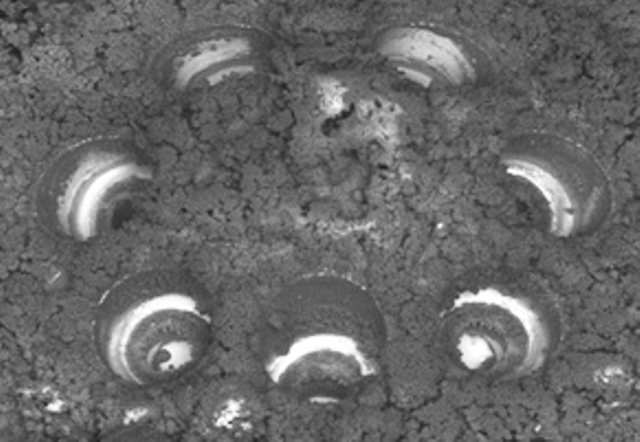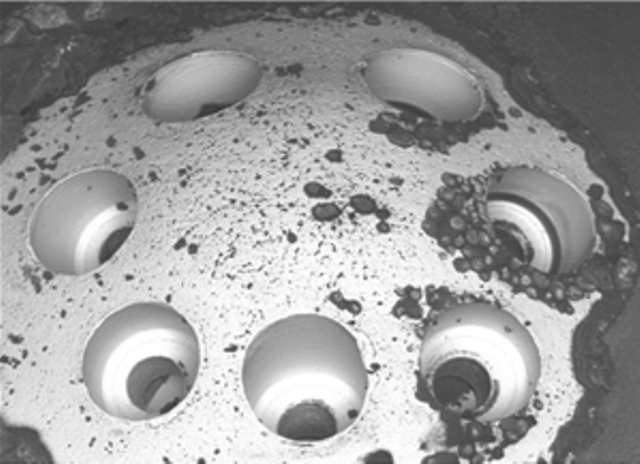Direct Fuel Injector Cleaner
Engine hesitation, slow acceleration, poor or declining gas mileage, high idle, rough idle, slipping throttle response, and embarrassing cold starts are all symptoms of a common culprit: carbon deposit. As these deposits build up on, and around, fuel injectors, you can expect negatively affected direct fuel injectors, which will lead to poor and incomplete combustion of fuel into the cylinder. Instead of accepting these symptoms as our engine approaches its golden years, there are several solutions that can “reverse the signs of aging” for our beloved power trains.
If you do some internet research, you’ll find many explanations of the cause of this issue, as well as dozens of products that offer a quick-fix. Nearly every product has some sort of solvent that is designed to break down and dissolve this gunk on and around the injector, all with varying levels of success. As a lay-person, it took a lot for me to get my mind around these complex chemistries. Fortunately, after a ton of research with rocket scientists (not joking) along with the power of the internet, I finally got a handle on what’s at play here.When gasoline is fired in your engine, there are small by-products of the reaction that are not fully-combusted in the cylinder, creating carbon deposits and carbon buildup on fuel injectors, valves, and in the cylinder itself. As these deposits accumulate, the spray patterns from your injectors are negatively affected, which creates significant long-term issues. The decades of research the motor-heads at your car’s manufacturer did to perfect the spray pattern for your car becomes nullified as your engine’s injectors collect gunk and impede their original, optimized design.
A similar example would be hard water buildup that occurs on your shower-head over time—tiny deposits build up, turning your rain-shower into a spitting, trickling rinse, with a few of the exit points for the water generating increased amounts of pressure. However, in your engine, these clogs don’t just cause the gasoline to get redistributed to the working spouts within the injector. Instead, they physically change the droplet size of the gasoline injected into the cylinder, altering the OEM optimized spray pattern, causing failure of proper ignition. This failure creates even more deposits and perpetuates this nasty cycle in Gasoline Direction Injection (GDI) and Spark Ignited Direct Injection (SIDI) engines.
Unlike our shower head, we cannot exactly tie a shower cap full of vinegar into the engine bay to clean out our fuel injection system—we need a fuel injection cleaner that mixes with gasoline and cleanses the injector as it moves through the fuel system into the cylinder. There are several different chemistries that will work, to varying levels of success, in fixing this issue without having to go get an extensive cleaning from your local mechanic which can cost anywhere from $300 to $800. When choosing a product, there are two key elements you should consider: the main cleaning solvent, and the concentration of the cleaner versus cheaper alcohol-based products and coloring agents.
First, let’s look at the three main cleaning agents used in these cleaners:
- Polyetheramine (PEA): Strongest solvent, industry-standard, and great for cleaning injectors
- Polyisobutylene amine (PIBA): Not as strong as PEA, but helpful in removing deposits throughout the fuel system
- Polyisobutene (PIB): Water deposit cleaning and prevention (weakest option, and will not solve the main symptoms)
Next, let’s explore the concentration of these cleaning solvents as the percent of active ingredient per dose.
Most concentrated solutions still go in as a one-time-use treatment, with some asking for usage at every fill-up, and some recommending use every 3,000-5,000 miles. It’s important to note the value equation here. Many “use-with-each-tank” products are cheaper bottle-for-bottle but, unfortunately, they have worst-in-class concentrations of the solvents we seek to solve our problem. At $3.00 a pop, this can add up extremely quickly. Even for five times the price, you are better off getting a multi-thousand-mile solution that can manage 15 fill-ups, or more. It will end up saving you money in the long run:
- $3.00 Product used at every fill-up over 5,000 miles: $3.00 x 12 fill ups = $36.00
- $15 Product used once over 5,000 miles: 1 x $15 = $15.00
The next step is just to do your own homework. Check out the Safety Data Sheet (SDS) for the products you are researching, usually available on their website. Anything less than a 25% concentration of PEA is less than a great value.
Picking back up my own journey with finding this information begins with my personal love affair with my 2013 DFI vehicle. I won’t tell you the make, but it rhymes with “Cloudy”, and the model is a coupe with a 3.0L Supercharged DFI V6. I’ve had this car since it was new; I’ve added an exhaust, cold-air intake, and an ECU-flash to make it a 400HP beast. Although I consider myself a “car guy”, I haven’t ever put anything in my fuel tank other than gas, and can only change my own oil if I am able to borrow someone’s drip pan. Over the last year or so I’ve noticed an engine idle that used to be rock-solid at 800 rpm at start up move to 1100 rpm for the first five minutes of driving along with a rough idle experience at stop-lights. The throttle response that used to make this car surprise me with every caress of the accelerator started to become less punchy (this I did not realize until after I used a Direct Fuel Injector Cleaner). My 22 mpg factory gas mileage, albeit never stellar, began to fall to 20 mpg.
I began sharing my experience with a true car guy who is intimately involved with the fuel additive industry; he walked me through the problem like a surgeon about to extract a tumor. Plain and simple: I allowed my well-oiled, high-performing vehicle to degrade into a medium-performing, two-door with a sun roof due to accumulation of carbon deposits. So, my friend invited me to test out a DFI product that has not yet hit the shelves [This product is still in production. This page will be updated when it is available and ready to sample]. The results have been absurd over my last four tanks:
1.Engine idle on cold start went from 1100 rpm to 900 rpm
This idle thing has been a huge deal for me. 1100 RPM creates an awful exhaust drone. Now, it drops back to the normal 800 after 60 seconds instead of five minutes and is getting shorter with each cold-start opportunity.
2.Throttle response is back to surprise-and-delight
This, to me, has been my favorite before-and-after of this whole semi-clinical trial. I remember the feeling the first time I got into my car after the ECU had been flashed, adding 60HP. Obviously, this product did not generate another 60HP, but the before-and-after shock is the same on throttle response; it’s like a brand-new car for me, surprising me every time I feather the accelerator by pushing me back in the seat.
3. Rough idle turned smooth
At stop-lights, I no longer get the gargles or movement on my tachometer. All that’s left is a rock-solid idle that seems like it has found its identity again at 800 rpm.
4. Gas mileage is back/slightly better than factory at 23 mpg
Granted, this is only on four fill-ups but comparing apples-to-apples on the previous lifetime of the car, on the same type of commute, I’m up three mpg from where I was six weeks ago. I call that money saved well. I’ll keep this updated with my findings over a longer interval, and make sure that I keep doing the gas-station math continuously as I fill up over the next few months.
The solution I found was the best of all worlds as it is innovative chemistry which contains a “hybrid” chemical that incorporates aspects of both PEA and PIBA additives. The reason for the industry-battle between PEA and PIBA-based additives is the result of both having merits. What really makes this product work, and work well, is the combination of cleaning agents to get the highest percent of carbon deposits removed, some of which respond to PEA (say, on the actual injector), some of which respond to PIBA (within the cylinder itself). This formulation is a bit more than “a little bit of this, a little bit of that”, as the chemistries between PEA and PIBA are not so easy to get to perform well together, but these guys have nailed it.This innovative cleaning approach not only passed my smell tests, but knocked it out of the park from the other folks’ feedback that tried it alongside me. While the industry seems to continue to make “swiss-army-knife” claims (‘…this product will do EVERYTHING for your engine…’), personally, it is refreshing to find a product as a fuel system cleaner that does what it says it will do…nothing more, nothing less. Enthusiasts are known to seek their product “holy grail” by trial-and-error, while weeding through claims versus reality; but for this product, the Holy Grail aspect is plain-and-simple: it is what it is.
EDIT: After writing up this review, I will be pleased to include the link for where you can get this product I tried once it is produced. I’d love to read your experiences and build a broader community perspective on your results after trying it.







![By Tony Webster (Own work) [CC BY-SA 3.0 (https://creativecommons.org/licenses/by-sa/3.0)], via Wikimedia Commons](https://www.goldeagle.com/wp-content/uploads/2018/11/Brayton_direct_injection_solid_fuel_injection_system_1887-232x300.jpg)


![By Tony Webster (Own work) [CC BY-SA 3.0 (https://creativecommons.org/licenses/by-sa/3.0)], via Wikimedia Commons](https://www.goldeagle.com/wp-content/uploads/2018/11/Car_display_odometer_8286717806_o.jpg)
I really want to know this product as I have the same product